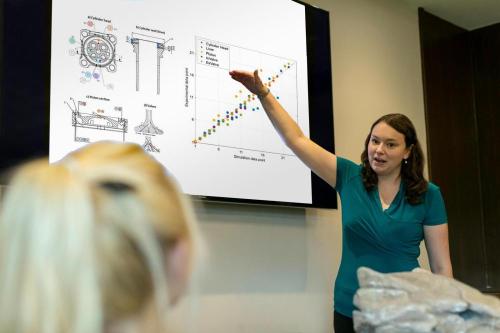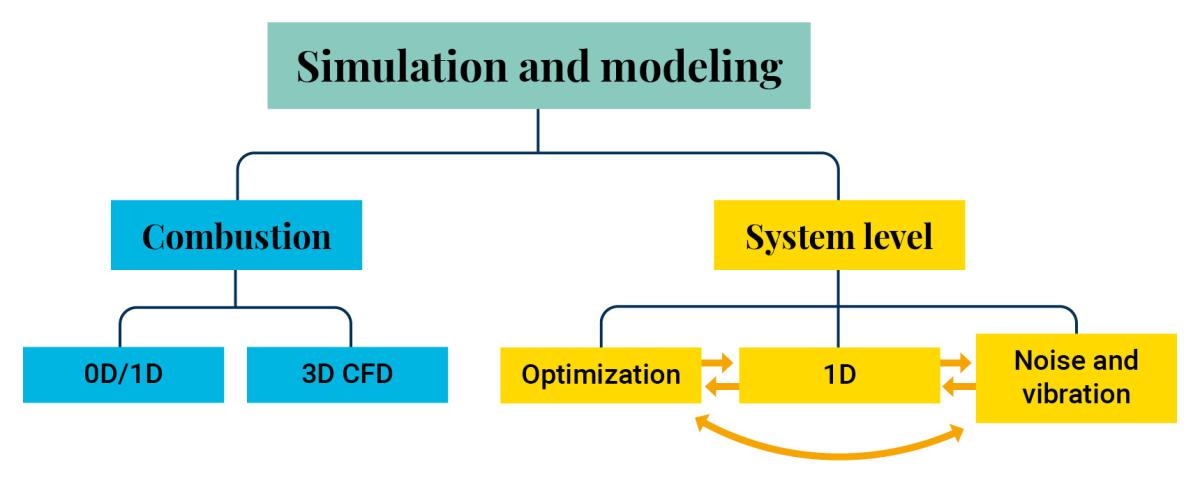Simulation and modelling
A significant goal of the Simulation and modelling subgroup is the transformation of multi-fuel powertrains, particularly in the marine engine sector, aiming to address emissions challenges. The subgroup explores combustion modes for alternative fuels, develops a versatile base engine, and customises aftertreatment systems for new fuels such as ammonia and hydrogen. Simulation and modelling activities at the University of Vaasa are primarily conducted within the EPS research group.
Through collaborative efforts within our organisation and partnerships with industry leaders, we strive to drive innovation and contribute to the evolution of internal combustion engine technology. Together, these endeavours underscore the university's dedication to pioneering research, sustainability, and the exploration of alternative fuels and technologies.
The University of Vaasa is currently at the forefront of diverse and innovative research projects, showcasing a commitment to pioneering initiatives. One of the key ongoing projects is a comprehensive study focused on the development and validation of engines using hydrogen-ammonia carbon-neutral fuels. This research spans various aspects of internal combustion engines (ICE), from mapping requirements to thermal output modelling of alternative fuels such as H₂ and NH₃.

Capabilities
Software: GT-Power, Converge, OpenFOAM
Coding and programming: C++, MATLAB, Python
In-house tools:
- University of Vaasa Advanced Thermo-Kinetic Multi-zone Model (UVATZ Model)
- Turbulence Modelling
- Phenomenological spray (under development)
- Acoustic turbocharger Modelling (under development)
- Injector Modelling (under development)
Combustion Modelling:
• 0D/1D Simulations
• 3D CFD Simulations
Comprehensive Modelling and Simulation:
Investigations cover a broad spectrum of engine subsystems, utilising commercial software tools tailored to the specific complexities of each subsystem to optimise their functionality and understand their influence on overall engine performance.
Full Combustion Modelling
Engine Subsystem Modelling: Involves detailed examination of individual components to gain insights into their performance and their direct impact on combustion outputs, contributing to the overall efficiency of the engine.

